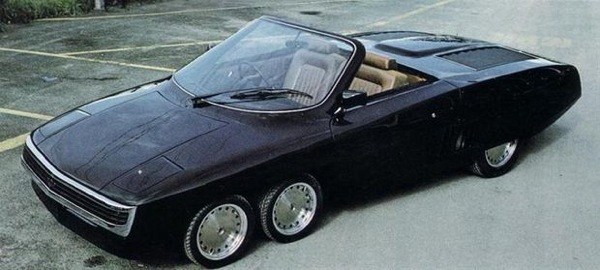Six Packed For Style

Why would a British replica manufacturer want to build a turbocharged rear-engine six-wheel roadster? Why, why not ?
The choice of a six-wheeled configuration Was not made on technical grounds, but once it had been made, we began to
find technical advantages deriving from it. Panther managing director Bob Jankel speaks quite frankly about the motives behind his design of the new six-wheeler winch was the rage of London’s autumnal Motorfair, but there is a lot more to be said. For a start, with 600 hp at its service, the car should has no difficulty in beating the 200-mph target set for it.
For another thing, with 600 pound-feet torquing through its Hydramatic transmission to he rear tires, it fray very well acceleration standstill to 100 mph in the seven or eight seconds envisaged. For a third, even with those tires measuring 265 mm across the tread, the device is going to break traction all too easily. Should it perhaps have been an eight-wheeler?
What good does it do, having six? It will not go any faster than with four; but it will stop a lot faster, steer better, and, most important of all, the owner will have no difficulty in identifying his vehicle among the masses in the car park. Identity, that was what Jankel sought. The Panther firm was well enough known, but not known for the right things. It was the old old story of the public figure whose public did not understand him, of the clown who wanted to play Hamlet.
Panther was “that firm making fancy replicas of old-fashioned cars;” only a handful of people knew that Panther was also a firm doing superb restoration work on genuine vintage cars, a firm doing regular contract work on Phantom Six body parts for Rolls Royce, a firm whose standards of craftsmanship and integrity brought it prototype work from some of the biggest manufacturers in the business.
For a company scarcely six years old, that is not a bad reputation to have but the cars most people associate with Panther are the one that look fondly back to a much more distant past. The Panther De Ville is a pseudo Bugatti Royale, the Panther J72 is a pseudo
SS Jaguar 100, and the little Lima now being produced in uncharacteristically large numbers (a new factory in the most western corner of England will soon be making a version for America) looks like a customised Dellow pretending to be a Frazer Nash. All very quiet.
